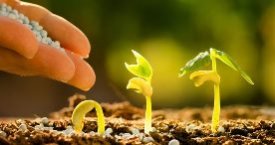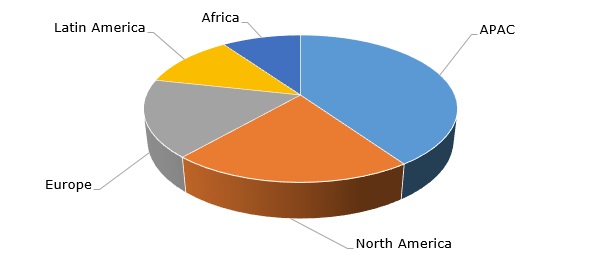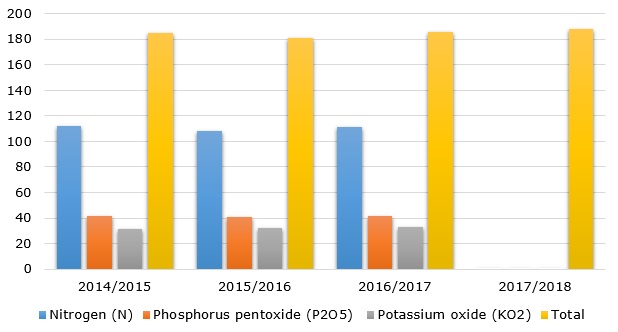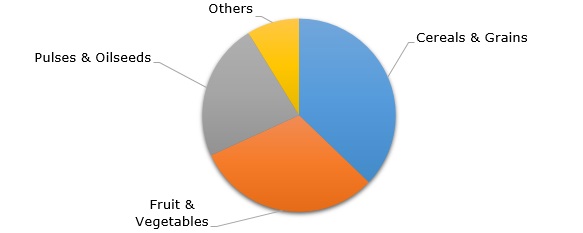Major Facts to Know about Agrochemicals Market
04 Apr 2018 • by Natalie Aster

LONDON – Nowadays, the agricultural industry is changing at an incredible pace to meet the mushrooming demand of the rising global population. Worldwide, farmers have become more sophisticated and interconnected than ever before: now, they are fitted with many innovative techniques and modern equipment to protect farmlands and improve crop yields.
Every year, nearly 30% of the potential crop volume is lost owing to pests, insects, weeds, plant pathogens, birds, rodents, etc. Thus, the use of agrochemicals to prevent and reduce the influence of various disasters and increase the crop output volume and safety has emerged as a prominent and vital aspect of the modern agriculture. Agrochemicals form the biggest and the most diverse group of chemical compounds, which help to manage an agricultural ecosystem more efficiently. Today, a wide choice of agrochemicals is available in the market including fertilizers, soil conditioners, pesticides, acidifying and liming agents, fungicides, insecticides, herbicides, amid others.
Despite being extremely important in scaling up the yield of agricultural crops, some agrochemicals cause certain environmental harm and ecological damage. This considerably detracts from the benefits provided by these substances and acts as one of the major challenges of the world’s agrochemicals industry.
World’s Agrochemicals Market to Post Single-Digit Growth through 2025
In 2016, the value of the world’s market for agrochemicals climbed to USD 215.18 billion. During 2018-2025, this market is forecast to exhibit sustainable growth at a CAGR of over 4%. By late 2025, the world’s agrochemicals market is forecast to exceed USD 308.9 billion.
The world’s agrochemicals market value in 2015-2017 and 2025* (in billion USD)
.jpg)
The constantly rising demand for food on the back of the rapidly increasing global population, the growing prevalence of different crop diseases, an upturn in R&D for the introduction of new agrochemicals coupled with favourable government initiatives to improve the crop yields are likely to act as the key growth engines of the agrochemicals market. Besides, ongoing technological advancements and changing farming practices are also expected to contribute to the market growth.
Meantime, stringent requirements for product approval, high costs, rising availability of counterfeit pesticides, and some adverse effects associated with the usage of chemical substances may hamper further growth in the agrochemicals market.
Emerging Markets Offer High Growth Potential for Agrochemicals
APAC ranks the biggest and the most rapidly-growing regional market for agrochemicals. This region accounts for about 30% of the global land area. The region’s population represents appr. 60% of the world’s total. In the wake of robust urbanization, changing consumption patterns and rising incomes of local consumers, APAC registers the greatest consumption of agrochemicals. Besides, the mounting demand for processed food together with a substantial increase in the consumption of meat and dairy in the region drives the demand for animal feed, which adds to the APAC agrochemicals market growth. Improving logistics and rising penetration of modern technologies also give a boost to the regional market growth. In the years ahead, APAC is poised to maintain the dominant position and pick up at the highest rate.
The world’s agrochemicals market revenues by region, 2016

The agrochemicals market in North American and European regions has already reached the maturity and is projected to see below average growth in the next years. Growth in these regional markets will also be restrained by strict regulatory norms.
The Latin American market for agrochemicals is predicted to go up at a rapid pace owing to a remarkable upturn in the agricultural farming in the region (especially in such countries as Mexico and Brazil), enhancing awareness of agrochemicals among local farmers and the entry of established companies into the regional market.
The agrochemicals market in the MEA region is also poised for healthy growth. This is majorly attributed to the ongoing economic growth and the rising adoption of innovative agricultural techniques.
Fertilizers Grab Dominant Share of Agrochemicals Market
With a share of almost 60%, the fertilizers sector takes lead in the agrochemicals market. Phosphate and nitrogenous fertilizers are the most frequently used types given their low prices and easy availability. However, the surging organic farming trend (that involves complete exclusion of chemical fertilizers) has spurred the demand for bio-fertilizers during the recent years and is likely to continue influencing the market in the foreseeable future. The fertilizers sector is anticipated to keep to an upward trend and maintain the dominant share in the short to medium term.
Global demand for fertilizers by nutrient from 2014/2015 to 2016/2017 (in million metric tons)

Meantime, the crop protection chemicals sector is slated to exhibit remarkable growth at a 5.5% CAGR, propelled by the increasing occurrence of rodent and pest attacks that damage crops.
Cereals & Grains Form Major Application Sector of Agrochemicals
At present, agrochemicals are extensively used in the cultivation of a great number of agricultural products. Cereals & grains form the biggest application sector with a share of over 37% of the overall agrochemicals market revenues. The sector’s value stood at slightly above USD 80 billion in the year 2016. The cereals & grains sector is predicted to exhibit healthy growth in the offing, supported by the elevating demand for whole grain products as a rich source of fiber and carbohydrates. Besides, active marketing campaigns of multinational players also act as the market growth driver.
World’s agrochemicals market revenue by application, 2016

Meantime, the highest CAGR (4.9%) in the upcoming years is anticipated in the oilseeds & pulses sector. Pulses (e.g., red lentils, soybeans, lupin beans, etc.) boast high protein content, which has spurred their consumption in daily meals. In the same manner, the growing demand for edible oil fuels an increase in the oilseeds sector.
6 Top Manufacturers Hold around 70% of Agrochemicals Market
Given the steady demand for agrochemicals and the vast operational area, many companies have entered the agrochemicals market and are doing their best to deepen their footprints in this lucrative field. Six major players together hold about 70% of the overall market. Bayer AG ranks the leading agrochemicals producer worldwide. Other prominent players include Yara International, BASF, Dow Agro Sciences, Makhteshim Agan Industries, DuPont, Monsanto, Agrium, Syngenta, among others.
Market capitalization of selected agrochemicals manufacturers, 2017 (in billion USD)
.jpg)
Conclusion
Shrinking arable lands on the back of robust industrialization and rapid population growth coupled with steady economic development and the surging demand for food are fueling the demand for agrochemicals. Besides, the strong demand for agrochemicals can be attributed to the mushrooming need for pesticides, an enhancing popularity of genetically-modified crops and also the accelerating pressure on farmers to reduce the cost of crops cultivation by applying efficient agriculture products. Whilst the benefits of agrochemicals are undeniable, and the awareness among consumers is increasing, the toxicity of synthetic products presents the major challenge for the agrochemicals industry.
© MarketPublishers.com, 2018
Analytics & News
